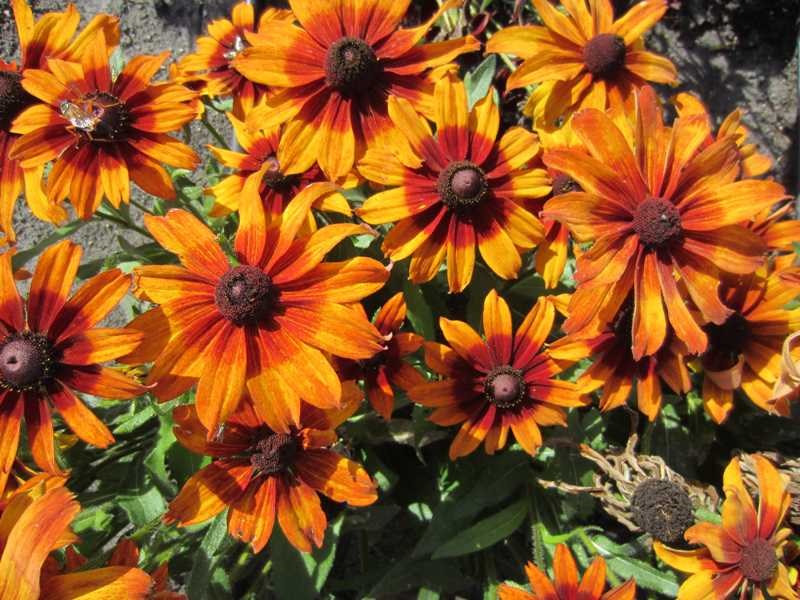Black-eyed Susan (Rudbeckia hirta ‘Autumn Colors’)
Black-eyed Susan
Ruudbeckia hirta, commonly called black-eyed Susan, is a common Missouri native wildflower which typically occurs in open woods, prairies, fields, roadsides and waste areas throughout the State. It is a coarse, hairy, somewhat weedy plant that features daisy-like flowers (to 3” across) with bright yellow to orange-yellow rays and domed, dark chocolate-brown center disks. Blooms throughout the summer atop stiff, leafy, upright stems growing 1-3’ tall. Rough, hairy, lance-shaped leaves (3-7” long). Plants of this species are sometimes commonly called gloriosa daisy, particularly the larger-flowered cultivars that come in shades of red, yellow, bronze, orange and bicolors.
Genus name honors Olof Rudbeck (1630-170- Swedish botanist and founder of the Uppsala Botanic Garden in Sweden where Carl Linnaeus was professor of botany.
Species name of hirta means hairy in reference to the short bristles that cover the leaves and stems.
‘Autumn Colors’ was bred by Benary of Germany and DeKalb, Illinois and received an award from Fleuroselect for its large, 5 in. wide, profuse flowers. It is a compact plant growing 5 to 2 ft. tall and 1 to 5 ft. wide. Its flowers have bicolor rays in shades of yellow, orange, red and brown with a brown cone.

Biennial or short-lived perennial that is winter hardy to USDA Zones 3-7. It blooms in the first year from seed planted in early spring, and is accordingly often grown as an annual. It is easily grown in average, medium moisture, well-drained soils in full sun. Best in moist, organically rich soils. Tolerates heat, drought and a wide range of soils except poorly-drained wet ones. For best result from seed in the St. Louis area, start seed indoors around March Seed may also be sown directly in the garden at last frost date. Some varieties are available in cell/six packs from nurseries. Set out seedlings or purchased plants at last frost date. Deadhead spend flowers to encourage additional bloom and/or to prevent any unwanted self-seeding. Whether or not plants survive from one year to the next, they freely self-seed and will usually remain in the garden through self-seeding.
| Sun light | Full sun |
| Water | Medium |
| Maintenance | Low |
No serious insect or disease problems. Susceptible to powdery mildew. Watch for slugs and snails on young plants. Can self-seed freely. Deer tend to avoid this plant.
Borders. Annual beds. Cottage gardens. Wild gardens. Meadows. Groups or mass plantings. Good cut flower.
| Common name | Black-eyed Susan |
| Botanical name | Rudbeckia hirta 'Autumn Colors' |
| Plant type | Herbaceous perennial |
| Family | Asteraceae |
| Water | Medium |
| Maintenance | Low |
| Flower color | Bicolor shades of yellow, orange, red and brown with a brown cone |
| Flowering period | June - frost |
| Height | 1.50 to 2 ft. |
| Width | 1 - 1.50 feet |